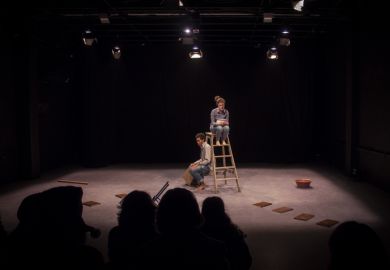The Sunni ruler of Syria, Nur al-din Hasan (1146-1174), was a patron of the arts who transformed the cultural landscape of his country. Yasser Tabbaa's scholarly study considers the arts and architecture of Syria and the Jazira (Mesopotamia) from this period onwards, concentrating on Nur al-din's reign.
The book benefits from the extensive historical and archaeological information collected by Tabbaa in the 1980s for his doctoral dissertation. Traces of the dissertation surface occasionally in perhaps over-long arguments. But the author has set aside a chronological approach and examines the arts in their social and political context.
An analysis of the theological and political characteristics of the populist Sunni revival in Iran and the Arab world is followed by an examination of the propagandist approach of Nur al-din who exploited it against the Fatimids (Shi'as) by emphasising the fundamental differences in religious belief between the two sects. Tabbaa holds that a public visual manifestation of this political assault on the Shi'ite order was the transformation of calligraphic styles and the art of expressing the power of the Holy Word. The master calligraphers and their impact on the development of the Arabic script are discussed and samples of their work are given. Two chapters are devoted to the study of the development of the script from the two simple early forms - cursive and angular - to the fine 12th-century Koranic calligraphy and the Ghaznavid and Seljuq foliated and floriated Kufic script displayed in the epigraphs of most major monuments. If the former concerned only the literate, the latter was for everyone to admire, even if they could barely read. The angular Kufic script was taken to all corners of the Islamic world in the 11th and 12th centuries, but in the 13th and 14th centuries, it gradually died out. The cursive form, however, continued evolving to what became known as Naskhi script, and a version of it is used for modern Arabic and Persian printed works.
The rest of the book is devoted to architecture. Nur al-din's impact on his society manifested itself mainly in the built environment. If the Rome of brick was transformed by Augustus into the Rome of marble, Nur-al-din's legacy was the transformation of the post-Byzantine Syrian townscape to one of domes, geometric and floral ornamentation ( girih or arabesque forms) and, above all, muqarnas work (three-dimensional geometric ornamentation). None of these was a new innovation, but came from the eastern Islamic world where they had been conceived under the Samanids in 10th-century Central Asia and underwent an evolutionary transformation under the Ghaznavids and Seljuqs.
Although the book concerns a small area of the Islamic world during a limited period, it has wider implications. Tabbaa would prefer to see it as a case study, where art and architecture reflected the politics and the religious realm of the Islamic society of its time. He says a similar approach may be valid for other periods of Islamic history, for example the 16th-century Shi'ite revival in Safavid Persia. By distancing himself from outdated views characteristic of western scholarship, which often approached Islamic art as the product of static societies, Tabbaa offers a fresh and valid approach.
Mehrdad Shokoohy is professor of architecture and urban studies, University of Greenwich.
The Transformation of Islamic Art during the Sunni Revival
Author - Yasser Tabbaa
ISBN - 1 85043 392 5
Publisher - Tauris
Price - £29.50
Pages - 210
Register to continue
Why register?
- Registration is free and only takes a moment
- Once registered, you can read 3 articles a month
- Sign up for our newsletter
Subscribe
Or subscribe for unlimited access to:
- Unlimited access to news, views, insights & reviews
- Digital editions
- Digital access to THE’s university and college rankings analysis
Already registered or a current subscriber?



